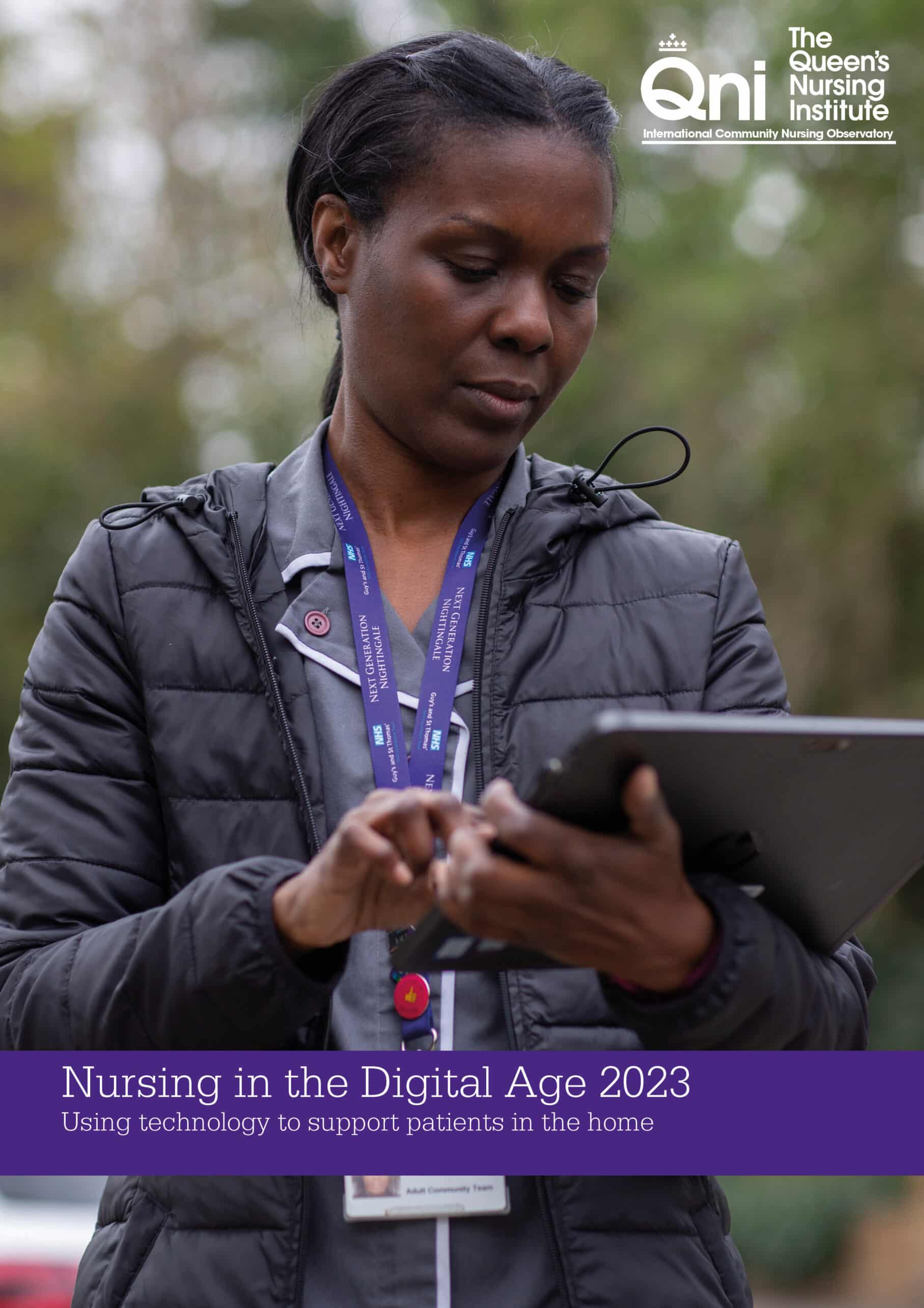The ‘Nursing in the Digital Age’ report (2023) is based on an online survey completed by almost 1200 practitioners during 2022.
The survey results show that digital technology is being used creatively for a wide range of work and its use is firmly embedded across community nursing practice. Technology influences how, when and where nurses interact with patients and deliver their care. Despite this, many nurses report that the application of digital technology in practice is poor and many feel that it is not saving them time, when time is at a premium.
The survey responses were compared to the previous survey of digital technology carried out by the QNI in 2018, which enabled some trends to be identified. Examples include:
- In 2018, around 85% of respondents reported issues with mobile connectivity. In 2022 this figure was around 87%.
- In 2018, 32.7% reported problems with lack of compatibility between different computer systems. In 2022 the figure had risen to 43.1%.
- In 2018, 29.5% reported problems with device battery life, but in 2022 the figure was almost 53%.
Overall, the community nursing workforce has a high level of digital literacy – poor user experience appears to be around design and function, rather than a lack of computer literacy or enthusiasm. The workforce has an appetite for new technology and can see the potential of new applications, for example in managing wound care or long-term conditions. Indeed, some have taken an active part in the design of local solutions.
Detailed survey responses show challenges regularly encountered by community nurses include short battery life, unsuitable hardware and software, old and cumbersome laptops, authentication challenges, use of multiple platforms, lack of integration and repetition of data entry. Ergonomic issues featured frequently, with heavy laptops and working while sitting in a car seat as major concerns. Some nurses felt unsafe doing this or were worried about confidentiality, thus taking work home to complete in their own time.
Recommendations from the report
- Obsolete devices should be replaced with up-to-date models. The cost of using obsolete devices in terms of lost time and efficiency is likely to far outweigh the cost of purchasing new hardware.
- Nurses should be consulted at an early stage in the choice of hardware for use in community settings to ensure that it is appropriate and safe for its designated use.
- Companies that design mobile devices should be called upon to improve future designs of those used by the community nursing workforce, actively seeking nursing feedback.
- Nurses should be involved at an early stage in the design and development of software programmes that they will use as part of their everyday work.
- Healthcare provider organisations, commissioners and policy makers should undertake national, regional and local reviews of Wi-Fi internet connectivity in all areas where their services are delivered and understand how this is directly impacting on the work of nurses delivering care in people’s homes and communities.
- Healthcare services and supporting organisations could usefully campaign for improved internet connectivity and ask for increased investment by mobile phone operators and government.
- Scheduling tools and related apps should always be designed, developed and used in a manner that is consistent with the nursing process, professional judgement and autonomy, personalised care and patient need.
- All healthcare providers should have a nurse who is appropriately experienced and skilled to lead on the use of digital technology within the organisation.
The new report was authored by Professor Alison Leary MBE, Director of the QNI’s International Community Nursing Observatory (ICNO), and Dave Bushe, ICNO Data Analyst.
Over the last decade, the QNI has been tracking the use of digital technology by nurses, publishing the report ‘Smart New World’ in 2012 and ‘ Nursing in the Digital Age – Using Technology to Support Patients at Home ‘ in 2018.
 Back to Resources
Back to Resources 
